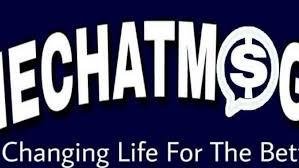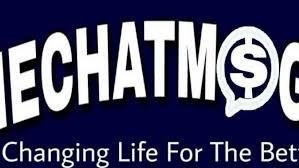Bitcoin mining has evolved from a simple computer-based process into a highly specialized industry. Today, powerful machines called mining rigs are at the heart of this ecosystem. These machines verify transactions, secure the blockchain, and generate new bitcoins as rewards. In this blog, we’ll explore what Bitcoin mining is, how it works, the evolution of mining rigs, and how companies like BlockDAG are shaping the future of crypto mining.
1. What is Bitcoin Mining?
Bitcoin mining is the process of validating and recording new transactions on the Bitcoin blockchain. This is achieved by solving complex mathematical puzzles using computer hardware. The process is called “proof-of-work” and it ensures that the network remains secure and decentralized. Miners compete to solve the puzzle first. The one who solves it gets the right to add a new block of transactions to the blockchain and earns a reward in the form of newly minted bitcoins and transaction fees.
2. Evolution of Bitcoin Mining Hardware
In the early days of Bitcoin, mining could be done using a regular personal computer’s CPU. As more people joined the network and competition increased, miners shifted to GPUs (graphics processing units) which offered better performance. This was followed by the use of FPGAs (Field Programmable Gate Arrays) and then ASICs (Application-Specific Integrated Circuits). ASICs are specifically designed to perform SHA-256 hashing, which is the algorithm used in Bitcoin mining. They are much faster and more efficient than CPUs and GPUs. As of today, ASIC miners dominate the Bitcoin mining industry.
3. Understanding Mining Rigs
A mining rig refers to a setup that includes one or more mining machines. These rigs are designed to perform the computational work required to mine cryptocurrencies. They include the ASIC miner, power supply, cooling systems, and often a framework to hold the hardware. Mining rigs can vary greatly in size and power, from small desktop machines to large industrial-scale setups. The efficiency of a mining rig is measured in terms of hashrate (number of hashes calculated per second) and power consumption.
4. BlockDAG’s Range of Mining Rigs
BlockDAG offers a range of mining rigs tailored to different levels of users, from beginners to professionals. Each rig is designed for maximum efficiency and profitability.
4.1 X1 Miner
The X1 is a mobile mining app that allows users to start mining BDAG coins from their smartphones. It is beginner-friendly and allows mining up to 20 BDAG per day. This rig is ideal for those who are new to mining and want to explore it without significant investment.
4.2 X10 Miner
The X10 is a compact and plug-and-play mining rig that can mine up to 200 BDAG per day. It pairs with the X1 miner through Bluetooth and supports both Wi-Fi and Ethernet connectivity. It is perfect for small-scale home miners looking for more power than a smartphone app.
4.3 X30 Miner
The X30 delivers up to 600 BDAG per day. It is designed for users who want higher performance in a manageable size. It features optimized heat dissipation and power efficiency, making it suitable for personal or small business mining operations.
4.4 X100 Miner
The X100 is BlockDAG’s most powerful rig, capable of mining up to 2,000 BDAG per day. Priced at $1,500, it uses high-performance ASIC chips and supports the Blake2s algorithm. It is built for professional miners and is intended for deployment in mining farms or large-scale operations.
5. Mining Profitability: What Matters Most
Mining profitability depends on several factors including the hashrate of your mining rig, the current price of Bitcoin, network difficulty, electricity cost, and the efficiency of your hardware. After the latest Bitcoin halving in April 2024, block rewards dropped to 3.125 BTC, which means miners now earn less for the same amount of work. To remain profitable, miners must optimize their setups for energy efficiency and often relocate to areas with cheap electricity. High-efficiency ASICs like the BlockDAG X100 can help improve ROI by reducing power consumption per unit of computation.
6. Mining Pools: Strength in Numbers
Solo mining is extremely difficult due to the competition and network hashrate. As a result, most miners join mining pools. A mining pool is a group of miners who combine their computing power to increase the chances of earning rewards. The rewards are then shared among the members based on their contributions. Pools reduce the volatility of earnings and provide more consistent payouts. However, joining a pool also means sharing profits and possibly paying a fee to the pool operator.
7. Environmental and Regulatory Concerns
Bitcoin mining consumes a significant amount of electricity. Some estimates suggest that the network uses more power than entire countries. This has raised concerns about its environmental impact, especially when mining operations rely on fossil fuels. In response, many miners are turning to renewable energy sources such as solar, wind, or hydroelectric power. Some countries have introduced regulations to limit or control mining activities due to environmental and energy concerns. It's important for miners to stay informed about local laws and sustainability practices.
8. Key Features of BlockDAG Mining Rigs
BlockDAG’s mining rigs are built with the user in mind. They offer high performance, simple setup, and energy-efficient operations. Their X-series miners support multiple levels of mining, allowing users to scale up as needed. Features such as plug-and-play setup, mobile app integration, and optimized power usage make BlockDAG miners a competitive choice in today’s mining landscape. Their use of the Blake2s algorithm instead of SHA-256 also reduces competition from Bitcoin miner and provides a more accessible entry point for new users.
9. Future of Bitcoin Mining
The future of Bitcoin mining will be shaped by advancements in hardware, changes in regulation, and the ongoing development of sustainable mining practices. ASIC chips will continue to become more efficient, allowing miners to achieve higher performance with lower power consumption. At the same time, new consensus protocols like Stratum V2 aim to decentralize mining pool authority and improve security. There is also growing interest in using mining infrastructure for dual purposes, such as powering AI data centers, which could help balance electricity demands and improve profitability.
10. Conclusion: Should You Start Mining?
Bitcoin mining is not as simple as it once was. It now requires significant capital, advanced hardware, and access to cheap energy. However, with the right tools, mining can still be profitable. BlockDAG provides a clear path for newcomers and professionals alike to participate in crypto mining through its range of mining rigs. Whether you're using a smartphone app like the X1 or running a high-powered X100 miner, it's important to calculate your costs, understand the market, and stay up-to-date with technology trends. Mining is more than just earning coins—it’s about contributing to the security and future of decentralized networks.


